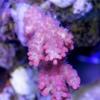How many have switched to Bare bottom
-
Topics
-
Latest Update
-
2
Stable frags for sale
Remaining frags 1) Sunflower zoas - $20 3) bicolor goniopora - $25 4) Pink lash goniopora - $25 Take these 3 for $60 -
2
Stable frags for sale
2) Classic red stag - $20 - SOLD 5) rainbow purple goniopora - $30 - SOLD -
2
-
4
-
-






Recommended Posts
Join the conversation
You can post now and register later. If you have an account, sign in now to post with your account.